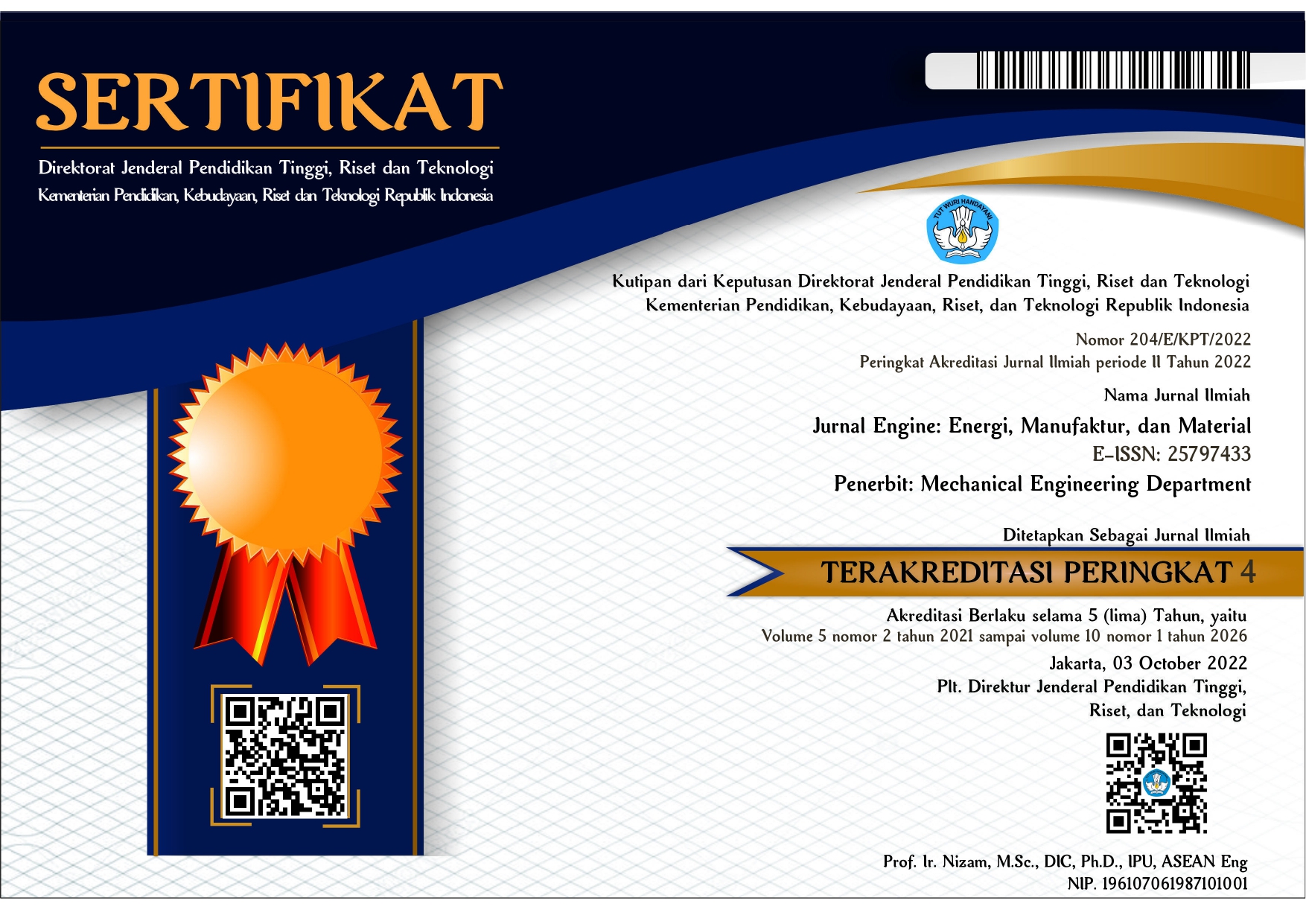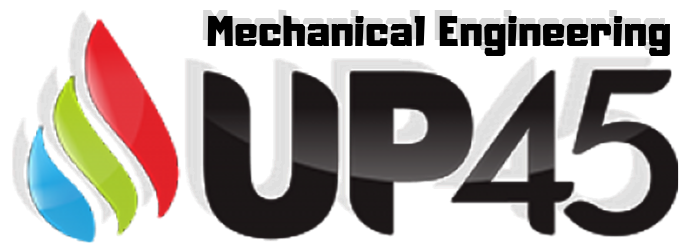Perancangan dan Analisis Rangka Body Mobil Listrik Kompetisi Fakultas Vokasi “aurora"
DOI:
https://doi.org/10.30588/jeemm.v8i2.1697Keywords:
Electric Vehicles, Structural Design, Finite Element Analysis, Ansys, Stress Simulation, Sustainable TransportationAbstract
The surge in demand for electric vehicles, including electric racing cars, has marked a significant pivot towards sustainable transportation, driven by the global imperative to reduce greenhouse gas emissions and urban air pollution. This study focuses on the structural design of a Formula Automotive Engineering (FAE) vehicle frame, which plays a crucial role in vehicle performance aspects like maneuverability, stability, and safety. With the objective of designing an efficient, lightweight, yet robust frame, this research utilizes Ansys, a leading finite element analysis software, to simulate structural static behavior and validate the frame design without the need for costly and time-consuming physical prototypes. Various simulations, including Torsion Test, Cornering Test, Aero+Cornering Test, and Frontal Impact Test, were conducted to assess the frame's response to different operational stress conditions. The results indicate that the frame withstands the imposed stresses while maintaining the necessary balance between strength and flexibility required for high-speed maneuvers and safety. This study concludes that, with advancements in engineering software, the iterative design process of electric vehicle frames can be significantly optimized, contributing to the development of competitive yet sustainable automotive technologies.
Keywords: Electric Vehicles, Structural Design, Finite Element Analysis, Ansys, Stress Simulation, Sustainable Transportation
References
Adolph, T., Schwedhelm, H., Lazaro, I., Versmissen, T., Edwards, M., Thomson, R., & Johannsen, H. (2014).
Development of compatibility assessments for full-width and offset frontal impact test procedures in FIMCAR. International Journal of Crashworthiness, 19(4). Retrieved from https://doi.org/10.1080/13588265.2014.909562
Albukrek, C., Doddegowda, P., Ivaldi, A., Amodeo, J., & Bardoscia, E. (2006). Unsteady flow analysis of a formula type open wheel race car in cornering. In SAE Technical Papers. Retrieved from https://doi.org/10.4271/2006-01-3661
Bagherzadeh, F., Murugesan, S., & Deka, P. (2020). Material comparison of dynamic cornering fatigue test (iso3006) for automotive wheel rim. International Journal of Engineering & Technology, 9(4). Retrieved from https://doi.org/10.14419/ijet.v9i4.31206
Ismail, H., Chiang, C. H., & Chieng, W. H. (2022). Onboard Sensor and Actuator Calibration of a Tripod Electric Vehicle Using Circular, Linear, and Cornering Motion Tests. SAE International Journal of Commercial Vehicles, 16(1). Retrieved from https://doi.org/10.4271/02-16-01-0006
Kaya, D., & Özyurt, E. (2022). Design and optimization of impact attenuator for a Formula SAE racing car. Sigma Journal of Engineering and Natural Sciences, 40(2). Retrieved from https://doi.org/10.14744/sigma.2022.00041
Kocabicak, U., & Firat, M. (2001). Numerical analysis of wheel cornering fatigue tests. Engineering Failure Analysis, 8(4). Retrieved from https://doi.org/10.1016/S1350-6307(00)00031-5
Lee, K. W., & Lim, J. M. (2014). Comparison on rating methods for female dummy in NCAP frontal impact test. International Journal of Automotive Technology, 15(6). Retrieved from https://doi.org/10.1007/s12239-014-0096-5
Lim, J. M. (2021). A Method for Predicting HIC15, Chest G’s and Chest Deflection Based on Results of USNCAP Frontal Impact Tests. International Journal of Automotive Technology, 22(3). Retrieved from https://doi.org/10.1007/s12239-021-0061-z
Macikowski, K., Warda, B., Mitukiewicz, G., Dimitrova, Z., & Batory, D. (2022). Change in the Torsional Stiffness of Rectangular Profiles under Bending Stress. Materials, 15(7). Retrieved from https://doi.org/10.3390/ma15072567
Mane, R., Garde, S., Taru, O., & Jadhav, P. (2020). Design and Manufacturing of Aerodynamic Bodyworks for Formula Student Cars. International Research Journal of Engineering and Technology.
Mathijsen, D. (2016). Formula student electric: Checking out the future of automotive engineering. Reinforced Plastics, 60(3). Retrieved from https://doi.org/10.1016/j.repl.2016.04.070
Mizuno, K., Wani, K., & Yonezawa, H. (2003). Vehicle crashworthiness in full and offset frontal impact tests. JSAE Review, 24(2). Retrieved from https://doi.org/10.1016/S0389-4304(03)00004-3
Patane, A., & Vesmawala, G. (2023). Experimental and analytical investigation of the behaviour of reinforced concrete beam under pure torsion. Materials Today: Proceedings. Retrieved from https://doi.org/10.1016/j.matpr.2023.03.539
Wan, H. X., Huang, B., & Mahendran, M. (2021). Experiments and numerical modelling of cold-formed steel beams under bending and torsion. Thin-Walled Structures, 161. Retrieved from https://doi.org/10.1016/j.tws.2020.107424
Downloads
Published
How to Cite
Issue
Section
License
Copyright (c) 2024 Yusuf Eko Nurcahyo

This work is licensed under a Creative Commons Attribution 4.0 International License.
Authors who publish with Jurnal Engine: Energi, Manufaktur, dan Material agree to the following terms:
Authors retain copyright and grant the Jurnal Engine: Energi, Manufaktur, dan Material right of first publication with the work simultaneously licensed under a Creative Commons Attribution 4.0 International License that allows others to share (copy and redistribute the material in any medium or format) and adapt (remix, transform, and build upon the material) the work for any purpose, even commercially with an acknowledgment of the work's authorship and initial publication in Jurnal Engine: Energi, Manufaktur, dan Material. Authors are able to enter into separate, additional contractual arrangements for the non-exclusive distribution of the journal's published version of the work (e.g., post it to an institutional repository or publish it in a book), with an acknowledgment of its initial publication in Jurnal Engine: Energi, Manufaktur, dan Material. Authors are permitted and encouraged to post their work online (e.g., in institutional repositories or on their website) prior to and during the submission process, as it can lead to productive exchanges, as well as earlier and greater citation of published work (See The Effect of Open Access).


















